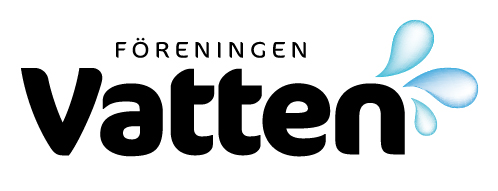KLEBSIELLA I PAPPERSBRUKSRECIPIENTER / Klebsiella in Paper Mill Recipients
Possible reasons for the development of greater numbers of bacteria in paper-mill processes from the time around 1965 and onwards are discussed. The proportion of enterobacteria was relatively constant, a few per cent of the colony forming units (CFU) with Klebsiella, Enterobacter, and Erwinia dominating among members of Enterobacteriaceae. The concern for the possible effects […]
MERCURY ACCUMULATION IN ARCTIC CHAR {SALVELINUS ALPINUS) AND BROWN TROUT (SALMO TRUTTA) IN AN ACIDIFIED COASTAL AREA, S.W. NORWAY
Muscle mercury accumulation in Arctic char (Salvelinus alpinus) and brown trout (Salmo trutta) have been studied in two small acidified coastal watersheds in S.W. Norway. Individual mercury concentration varied between 0.05 and 0.31 ppm (ìg/g) Hg, and increased significantly with age in all fish stocks, except one. Brown trout from Lake Djupvikvatn had the highest […]
MODELLBERÄKNING AV AVRINNING OCH KVÄVELÄCKAGE FRÅN TVÅ ÅKRAR I SYDSVERIGE / Modelling Runoff and Nitrogen Leaching from Arable Lands in Southern Swede
A conceptual model for simultaneous computation of runoff and inorganic nitrogen leaching has been developed and tested. The model is semiempirical with coefficients that are calibrated against observed data. The model has been verified against data from two small fields of arable land in southern Sweden. The results indicate that a major part of variations […]
EXPERIMENTAL DETERMINATION OF THE KINETIC EXPRESSION FOR THE DISSOLUTION OF K-SLAG, A TRICALCIUM SILICATE, IN ACIDIC AQUEOUS SOLUTION AT 25°C AND IN EQUILIBRIUM WITH AIR, USING THE RESULTS OF PH-STAT EXPERIMENTS;
Based on experimental studies in a pH-stat the dissolution kinetics for K-slag, a tricalcium silicate, was determined. The expression is: [CHEMICAL FORMULA NOT INCLUDED] where the rate constants at 20°C are given by: pKi =5.36±0.18, pKW=8.15±0.08 and pKB= 7.3 ±0.06. The dissolution of K-slag is slower than calcite dissolution but faster than dolomite dissolution at […]
CONTROL OF WATER QUALITY AROUND A CAGE FISH FARM IN THE NORRBY ARCHIPELAGO (NORTHERN BOTHNIAN SEA)
The concentrations of oxygen, nitrate, phosphate, particulate organic matter and planktonic algae around a cage fish farm during an annual cycle showed values similar to the concentrations in the water of the surrounding sea area. There was no increase of nutrients and no denser growth of algae in the cage fish farm. The concentration of […]
METALLERNA I VATTENLEDNINGSVATTEN, Metals in Drinking Water
The occurrence of copper, zinc, lead, cadmium and chromium in water distributed by Finnish waterworks was investigated in 1983. The volume of water from the 55 waterworks investigated covers 67 % of the total volume of public water supplied in Finland. The total number of water samples was 863. The possible connection between the occurrence […]
TREATMENT OF FOOD INDUSTRY EFFLUENTS IN AERATED SUBMERGED BIOLOGICAL FILTERS
A mixed wastewater from different food-processing industries has been treated in two pilot-scale aerated submerged biological filters. Plastic media with specific surface areas of 140 m2/m3 and 230 m2/m3, respectively, were used. A maximum volumetric removal rate in excess of 15 kg COD/m3d was obtained with the 230 m2/m3filter medium. In order to perform properly […]
UTSLÄPP AV FOSFOR OCH KVÄVE VIA DAGVATTEN FRÅN TÄTORTER Exempel från Mjölby vid Svartån / Discharge of Phosphorus and Nitrogen with Storm Water
The result of a part of the studies of the transport of nitrogen and phosphorus to the Svartå river within the Motala Ström river basin is given. The amount of nutrients transported to the river with the storm water from the city of Mjölby has been estimated. By maps and field investigations the size of […]
SJÖN TREKANTEN EFTER RESTAURERING / Lake Trekanten – after Restoration
Lake Trekanten has during the 20th century developed into a heavily eutrophicated state. The lake has served as a recipient for combined sewer overflow water. This outlet ceased in 1961. In order to prevent the internal fertilizing process which leads to enhanced primary production the sediment was treated in accordance with the ”Riplox Method”, i.e. […]
SJÖRESTAURERINGAR I STOCKHOLM / Lake Restorations in Stockholm
The working group for lake restoration was established in Stockholm in 1972. It started by examining the preconditions for restoration measures in 16 lakes and catchment areas, and went on to select seven priority lakes where measures should be taken. Since then, restoration work has proceeded, sometimes in co-operation with neighbouring municipalities. Among the various […]
